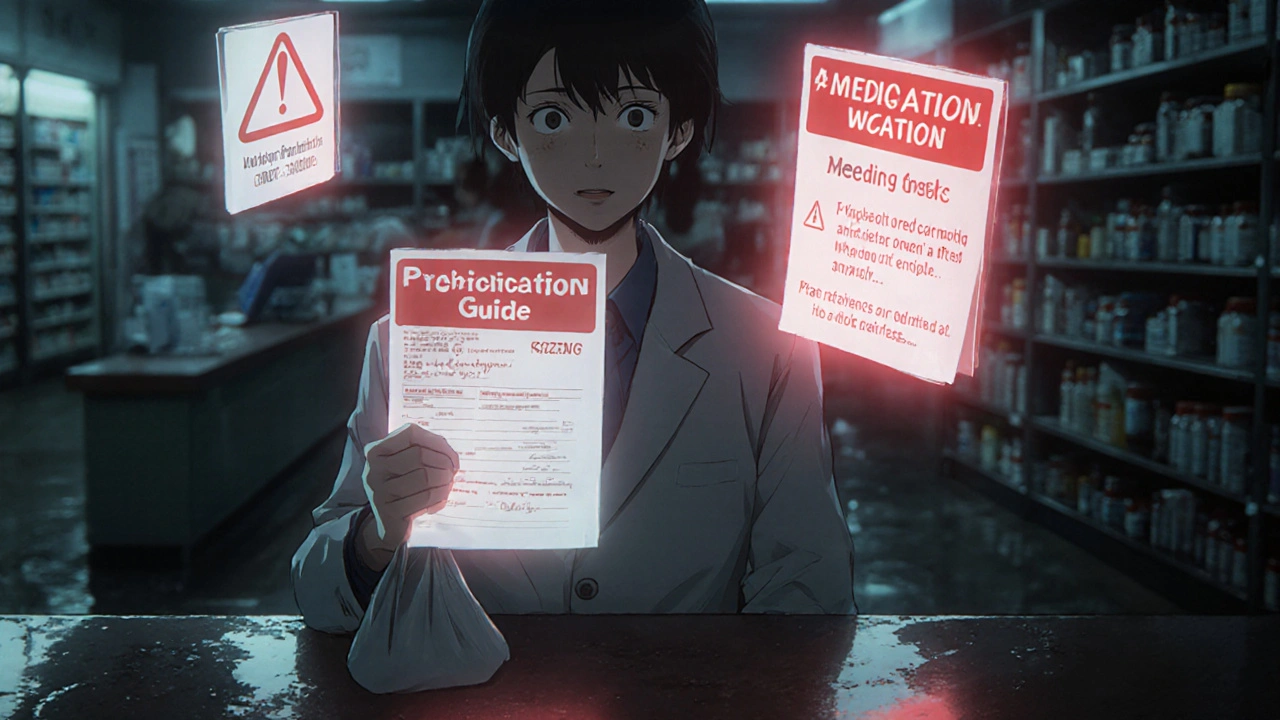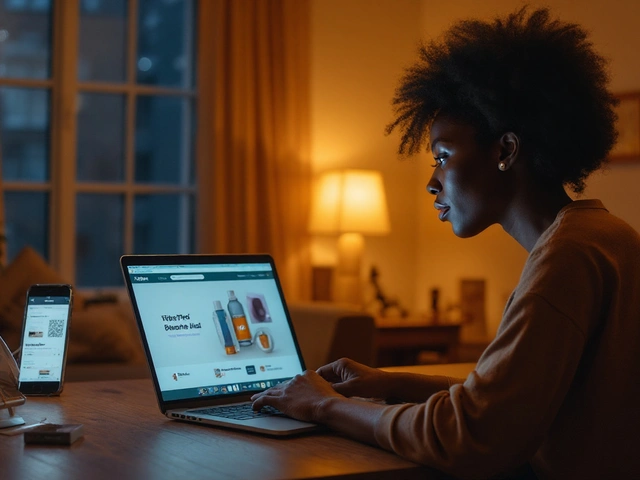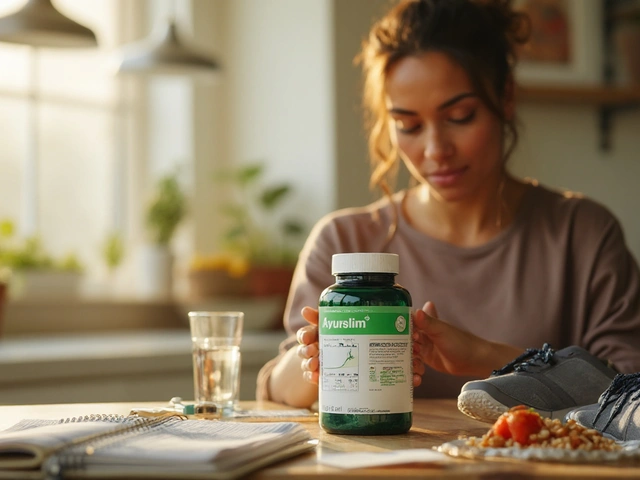When you pick up a prescription at the pharmacy, you might not notice it-but there’s a small paper insert in the bag meant just for you. It’s called a Medication Guide, and it’s not optional. The U.S. Food and Drug Administration (FDA) requires these guides for certain drugs that carry serious risks. These aren’t just fine print. They’re designed to help you understand dangers you might not know about-like life-threatening side effects, what to avoid while taking the drug, or when to call your doctor right away.
But here’s the problem: most people don’t know they exist, how to get them, or what to do if they’re not handed to them. And if you’re on a high-risk medication, not reading your guide could mean missing critical safety info.
What Is a Medication Guide and Why Does It Exist?
A Medication Guide (MG) is a printed handout approved by the FDA that comes with specific prescription drugs. It’s not the same as the manufacturer’s package insert meant for doctors. This one is written in plain English, for patients. The FDA only requires these guides for drugs where the risks are serious enough that patients need to understand them to use the drug safely.
Think of drugs like blood thinners (warfarin), certain antidepressants with suicide risk warnings, or medicines for multiple sclerosis that can cause severe brain infections. These aren’t everyday pills. They can cause harm if used incorrectly. That’s why the FDA stepped in. Since 2006, the number of drugs requiring these guides has jumped from 40 to over 300. That’s an eight-fold increase-and it’s still growing.
The FDA says a drug needs a guide if one of these is true:
- The drug has serious side effects that could be prevented if patients understand the risks.
- Patients must follow exact instructions for the drug to work at all.
- People might make bad choices about taking the drug without clear safety info.
These guides are mandatory for outpatient use-meaning when you take the drug at home, not in a hospital where nurses are watching you.
How Do You Get a Medication Guide?
The most common way is right at the pharmacy. When your prescription is filled, the pharmacist is legally required to give you the Medication Guide-every single time. That includes refills. It doesn’t matter if you’ve taken the drug for years. If it’s on the FDA’s list, you get the guide.
But here’s what many people don’t realize: you don’t have to wait for it to be handed to you. If you don’t see it, ask for it. Pharmacists are supposed to provide it even if they forget. And if they say, “We don’t have it,” they’re wrong. The drug manufacturer is required to supply the guide to every pharmacy that dispenses the drug.
You also have the right to ask for it in digital form. While paper is the default, the FDA allows patients to choose electronic copies. You can ask your pharmacist to email it, text it, or send it through your pharmacy’s app. Some pharmacies already do this automatically. Others still need a nudge. Don’t be shy-say, “Can I get this guide electronically?”
What If You’re Not Given One?
Let’s say you pick up your prescription and there’s no guide. Maybe the pharmacist didn’t notice. Maybe they thought you already had it. Either way, you have rights.
First, ask again. Say, “I was told this drug requires an FDA Medication Guide. Can I get a copy?” If they still don’t have it, call the pharmacy’s corporate office or file a complaint with the FDA. You can report missing guides online at fda.gov/medwatch.
There’s one exception: if you’re getting the drug in a hospital or clinic and a nurse or doctor administers it right there, they don’t have to give you a guide. But if you’re taking it home-even if it was given to you in a clinic-you still get the guide. And if you ask for it, they must provide it.
Some drugs are part of special safety programs called REMS (Risk Evaluation and Mitigation Strategies). For these, you might need to sign paperwork or attend a training session before getting the drug. In those cases, the guide is part of the process. You can’t skip it.
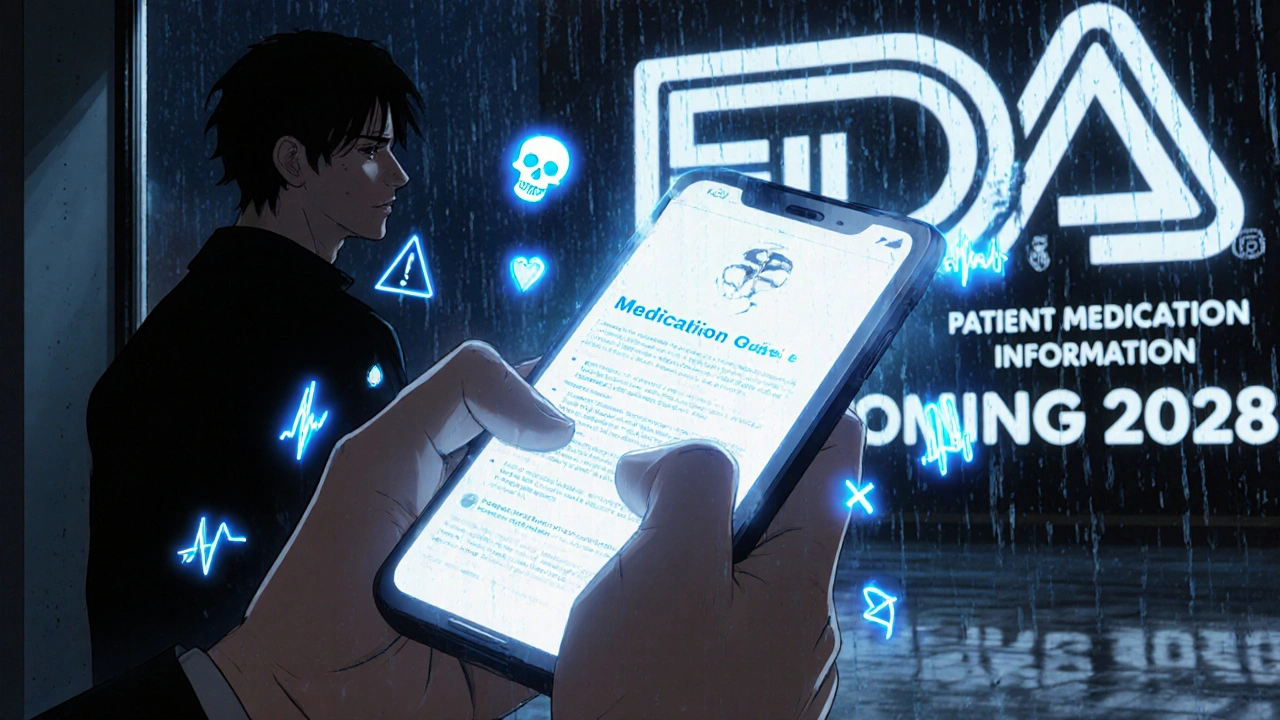
Where Else Can You Find Medication Guides?
Pharmacies aren’t the only source. The FDA maintains a public, searchable database of all approved Medication Guides on its website. You can look up any drug by name and download the official guide in PDF format. No login. No cost. Just go to fda.gov/medicationguides.
This is especially helpful if you’re switching pharmacies, traveling, or need to share the guide with a family member. You can print it, save it on your phone, or email it to your doctor. The FDA’s version is always the most up-to-date.
Some drug manufacturers also post their guides on their own websites. But always double-check with the FDA site. Manufacturer sites can be outdated or missing updates.
What’s in a Medication Guide?
These guides follow strict FDA rules. They must be written in plain language, not medical jargon. Every guide includes:
- The drug’s brand and generic name
- What the drug is used for
- Who should not take it
- Important safety warnings (like allergic reactions, organ damage, or mental health risks)
- Common side effects and what to do if they happen
- How to take it correctly
- What to avoid (alcohol, other drugs, certain foods)
- When to call your doctor or go to the ER
- How to store it safely
They’re not designed to be long. But many are. Some run 8 to 12 pages. That’s a problem. A 2012 study found most guides are too long, too dense, and too hard to read. They often use complex sentences and technical terms-even though the FDA says they shouldn’t.
That’s why the FDA is working on a new system called Patient Medication Information (PMI). The goal? One-page, standardized guides with the same format for every drug. Think of it like a nutrition label for medicine. It’ll be easier to scan, easier to understand, and stored in a central FDA database you can access anytime.
The PMI rollout is just starting. It’ll take years to fully replace the current system. But it’s coming. And when it does, you’ll get clearer, faster access to the safety info you need.
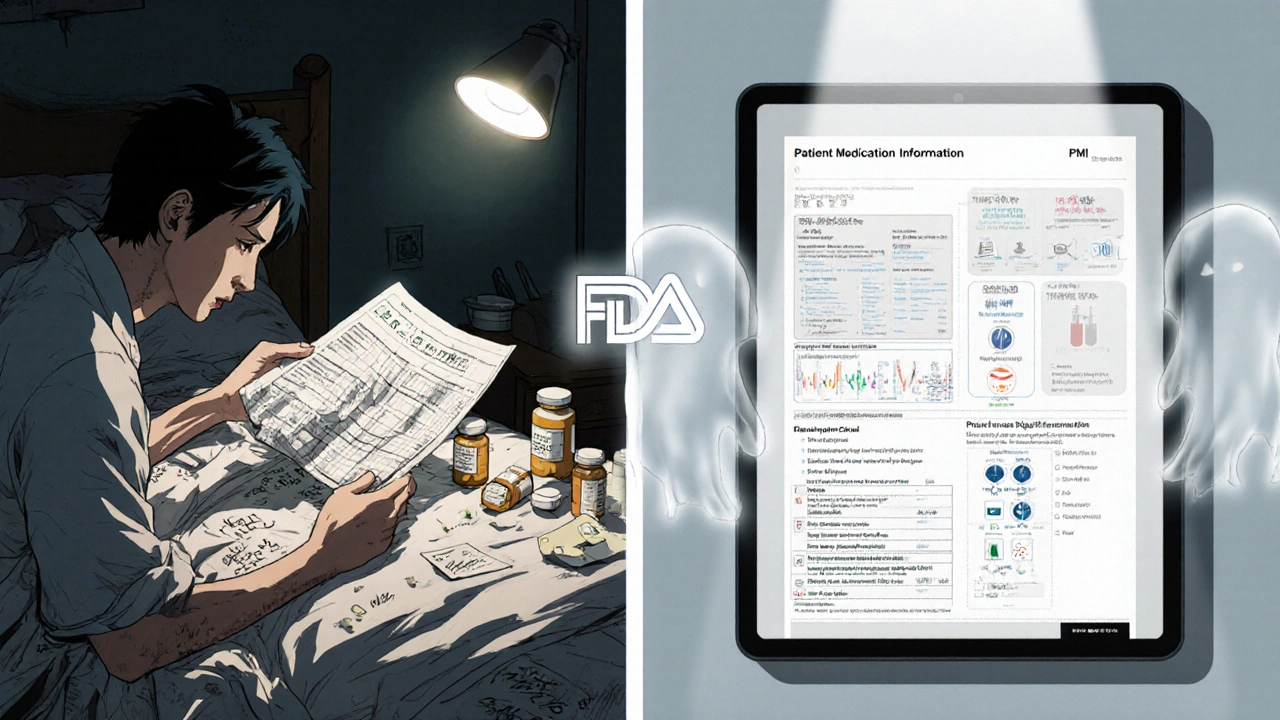
Why This Matters for Your Health
Reading your Medication Guide isn’t about being a good patient. It’s about staying safe. Take warfarin, for example. A simple mistake-like eating too much kale or skipping a dose-can lead to dangerous bleeding. The guide tells you exactly what to watch for. Or consider a drug like clozapine, used for severe schizophrenia. It can cause a deadly drop in white blood cells. The guide tells you when to get blood tests and what symptoms mean trouble.
Studies show patients who read their guides are less likely to have bad reactions. They’re more likely to take their meds correctly. And they’re more likely to speak up if something feels wrong.
But if you never see the guide-or you read it once and never look again-you’re flying blind. That’s why you need to make this part of your routine: every time you get a new prescription, ask for the guide. Read it. Keep it. Share it with a caregiver if needed.
What’s Changing in the Future?
The current Medication Guide system is outdated. It’s inconsistent. Some guides are clear. Others are nearly unreadable. The FDA admits it. That’s why the PMI system is a big deal.
Under the new rules, every drug with a safety warning will have a one-page guide with the same structure:
- What this medicine does
- When to use it
- When not to use it
- What to watch for
- What to do if something goes wrong
It’ll be available online, in apps, and printed on demand. Pharmacists won’t have to print 10-page documents anymore. Patients won’t have to wade through legal-speak.
Drugmakers have until 2028 to fully switch over, depending on when their drug was approved. But the FDA is already accepting submissions for PMI formats. The future is simpler. The future is clearer. And you’ll be able to access it with a quick search.
What You Can Do Today
You don’t have to wait for the system to improve. Here’s what to do now:
- Always ask for your Medication Guide when you pick up a prescription-even if you’ve taken the drug before.
- If you’re given a paper copy, read it. Highlight the warning sections.
- Ask for an electronic copy. Save it on your phone or in a cloud folder.
- Check the FDA website (fda.gov/medicationguides) to confirm you have the latest version.
- Bring the guide to your doctor appointments. Ask questions if anything is unclear.
- Help a family member or caregiver understand the guide if they’re managing your care.
Medication Guides aren’t paperwork. They’re your safety net. And you have the right to see them-every time.
Are Medication Guides required for every prescription drug?
No. Only drugs that have serious safety risks requiring patient awareness are required to have Medication Guides. These include medications with life-threatening side effects, those needing strict adherence to work, or those where patient misunderstanding could cause harm. Most common prescriptions like antibiotics or blood pressure pills do not require them.
Can I get a Medication Guide without a prescription?
No. Medication Guides are only provided with prescription drugs dispensed by licensed pharmacies. They are not available over the counter. You must have a valid prescription to receive one.
What if I lose my Medication Guide?
You can request a new copy from your pharmacist at any time-even for refills. You can also download the official version from the FDA’s website at fda.gov/medicationguides. Always use the FDA version to ensure you have the most current safety information.
Do I need to read the Medication Guide every time I refill my prescription?
Yes. The FDA requires the guide to be provided with every new prescription and refill. Even if you’ve taken the drug for years, the safety information may have been updated. Always review it each time.
Can I refuse to receive a Medication Guide?
No. Pharmacists must provide the guide regardless of patient preference. The FDA requires it for safety reasons. However, you can request an electronic version instead of paper. You cannot legally decline to receive the information.
How do I know if my drug requires a Medication Guide?
Ask your pharmacist when you pick up your prescription. You can also search the FDA’s database at fda.gov/medicationguides by entering your drug’s brand or generic name. If it’s on the list, a guide is required by law.
